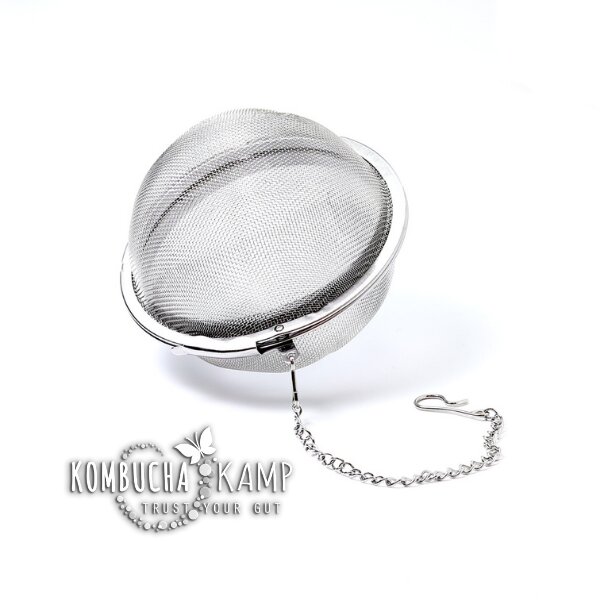Do you know how much tea is produced and consumed? Of course, only 2% of the tea produced and consumed globally is oolong tea, despite the fact that it has a good amount of health advantages, making it the second most popular beverage after water. The same Camellia sinensis plant that produces green tea and black tea is also used to manufacture oolong tea, a popular Chinese beverage. Due to its special processing procedure, oolong tea’s properties lay between those of green and black tea. You can use a loose leaf tea ball which allows plenty of room for the tea to expand. But what Oolong tea exactly is it? Why is green tea in the middle of black tea? You can view it in detail below:
What is oolong tea?
Oolong organic tea is a semi-oxidized tea that falls between green and black tea. Almost no oxidation occurs in the case of green tea, while all oxidation occurs in the case of black tea. Oolong tea lies in the middle, with some varieties leaning more toward the black tea side at 70 to 80 percent oxidation, while others lean more toward the green side at 10 to 20 percent oxidation. One of the reasons there are so many types of oolong teas, each with their unique flavor profiles, is the different oxidation levels. This makes it one of the fascinating types of teas enthusiasts to experience and explore.
How is oolong tea made?
Processing oolong tea is one of the most labor-intensive and difficult processes. The procedure follows these steps:
- Fresh leaves are exposed to sunlight and the open air to dry out before withering or wilting.
- Bruising: After the leaves have wilted, they are tossed in a tray to shatter them and speed the oxidation process.
- The leaves are then left to ferment, releasing their tannins and breaking down their chlorophyll.
- Fixing: To stop the oxidizing enzymes, the tea is finally heated. The oolong tea becomes semi-oxidized, developing its fruity flavor.
Types of Oolong Tea
- Phoenix Tea
The Phoenix Mountains in the Chinese province of Guangdong are where this tea gets its name. Though each batch’s flavor will differ based on the conditions in which the tea plant was grown and harvested, traditionally, it tastes like ripened stone fruit and honey with overtones of wood. The plants can undergo significant temperature variations throughout the day and growing season because they are raised at high altitudes. This variation results in a tough plant with strong aromas. Phoenix oolong is renowned for its aromas in particular.
- Iron Goddess of Mercy
According to tradition, a farmer from the Anxi district of the Fujian province discovered a tea shoot hidden beneath a temple dedicated to the Chinese Goddess of Mercy. It created a tea that was so delectable that it was initially exclusively offered to the Emperor and his Imperial Court before being made available to the general public. The name Iron refers to how difficult it is to make this tea. Traditional Chinese tea manufacturers still roast dried tea leaves by hand, which can take up to 60 hours. The flavor of Iron Goddess is floral with orchid undertones, but if it has been roasted for a longer period, it can also become dark and nutty.
- Wuyi Oolong Tea (Da Hong Pao)
Due to the mineral-rich silt, it is rooted in this Chinese tea, which is grown in the Wuyi mountains and referred to as rock tea. Iron and phosphorus, important for human health, are among the ions that stream off the mountain after rainfall and are absorbed by the soil. Wuyi teas have a floral flavor and scent with a milder roast, while a darker roast brings out the minerality and earthiness. Genuine Wuyi teas are relatively uncommon and expensive since they must come from a protected growing location in these mountains. Although grown nearby, teas with a similar flavor and appearance are typically less strong than a real Wuyi.
- High Mountain Oolong Tea (Gaoshan)
This particular variety of oolong organic tea is raised high in the highlands of central Taiwan, as its name suggests. Early in the 17th century, the Chinese introduced the plant to Taiwan, where it has since flourished. Since the sun’s rays are largely blocked by the dense cloud covering these mountains, the tea can develop a sweet and fruity flavor instead of a bitter one. High Mountain tea resembles green tea more than black tea since it is typically less oxidized and roasted. It tends to be more flowery and lacks the dark and roasty aromas that certain oolongs possess.
- Milk Oolong Tea (Jin Xuan Tea)
Milk Oolong tea, a different variety from Taiwan, is named for its creamy and sweet flavor. It is less fragrant and floral than other oolongs, and milk and sweets are frequently added to enhance its natural qualities. The leaves are grown at a somewhat lower elevation, and picked in the spring may cause their unique flavor. The rising temps produce a more mellow and buttery flavor.
Bottom Line
To stop additional oxidation and to dry the tea, it is burned. You can also enjoy this tea in your teapot or by the cup. In addition, the above listed are the types of Oolong Tea you can take to boost your health.

